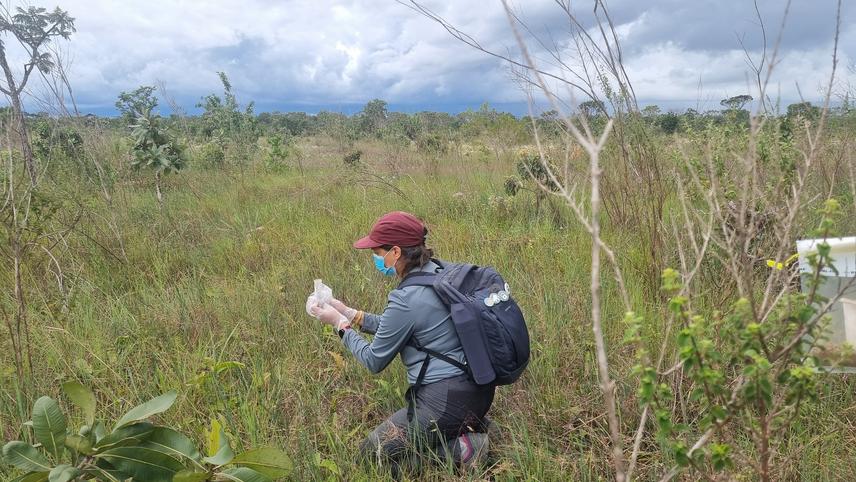Mariella Butti de Freitas Guilherme
This project aims to monitor and conserve rare rodent species in the Brazilian Cerrado by combining cutting-edge environmental DNA (eDNA) metabarcoding techniques with innovative community education strategies. The Cerrado is one of the most biodiverse savannas on the planet, yet it remains critically underrepresented in conservation research—particularly for small mammal species. This pilot project seeks to explore the potential of eDNA as a transformative tool for biodiversity monitoring.

Soil Sampling. © Wericles Ribeiro.
Using non-invasive sampling of soil and water, we will employ next-generation sequencing to detect the presence of elusive rodent species across key conservation areas. In collaboration with local research institutions, we will apply metabarcoding to identify genetic traces left in the environment, allowing for efficient and low-impact species detection without the need for physical capture or disturbance.
Fieldwork will focus on Brazil’s capital, Brasília, from which some of the rarest Neotropical rodent species have been described. These areas represent ideal testing grounds for implementing and refining eDNA protocols adapted to the unique challenges of the Cerrado, and also offer a great opportunity to record those species.
In parallel, the project features a strong public engagement component designed to foster environmental awareness and local stewardship. We will conduct interactive workshops at Brasília Zoo, particularly aimed at children and families. Through creative activities, participants will engage with biodiversity, genetics, and conservation science in an accessible and playful way.
The overarching goals of this project are threefold: to generate essential biodiversity data for conservation planning, to increase public understanding of conservation genetics, and to establish a replicable outreach model that can be scaled to other regions of Brazil. By integrating scientific innovation with community involvement, this pioneering initiative will not only strengthen our understanding of the Cerrado’s rodent fauna but also pave the way for broader applications of eDNA in Neotropical ecosystems.
Header image: Cerrado Vereda Landscape. © Wericles Ribeiro.